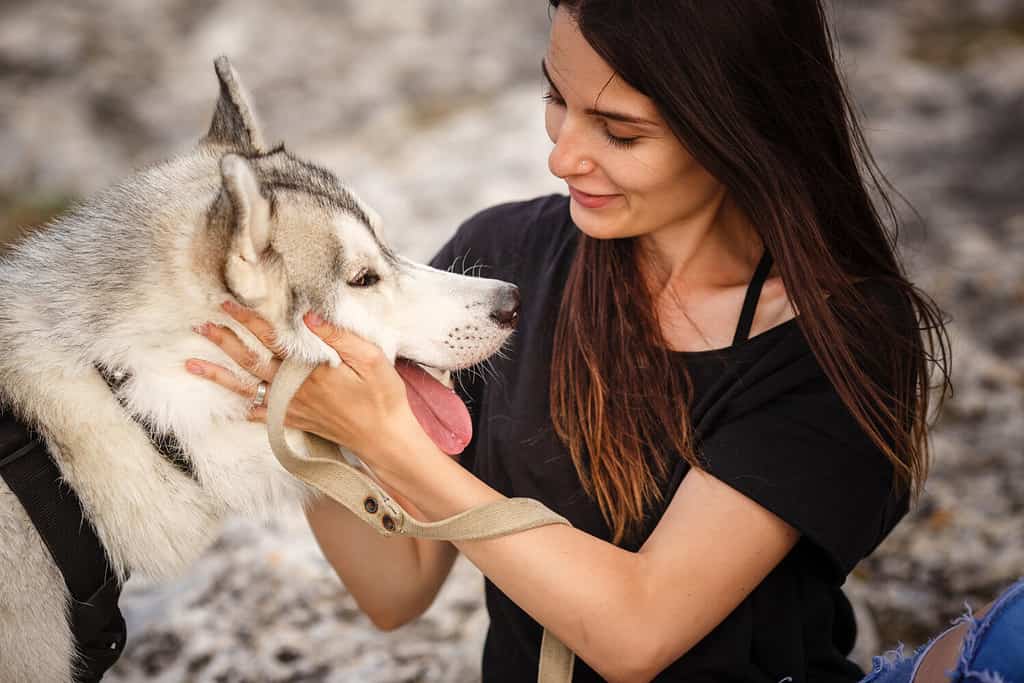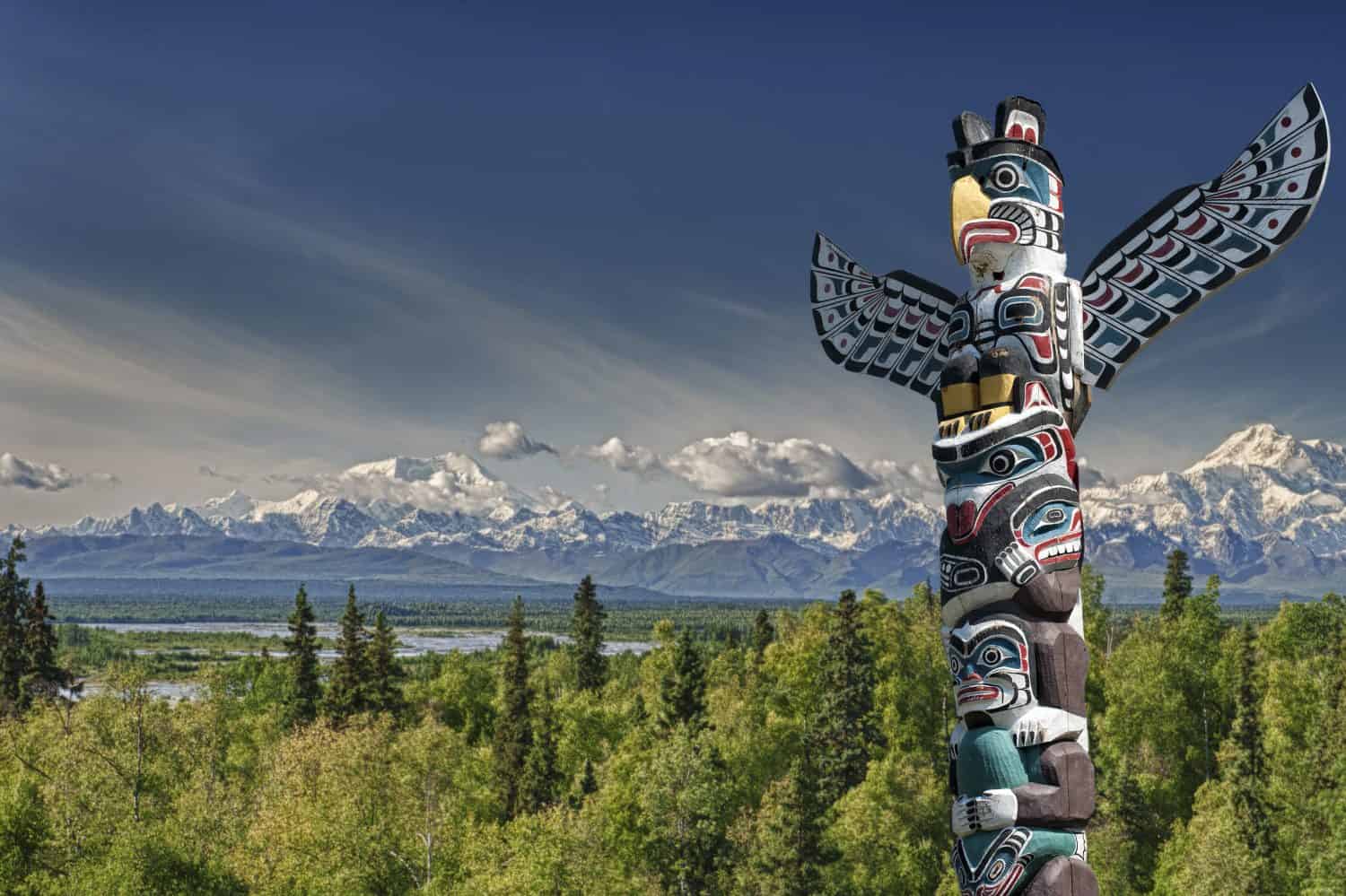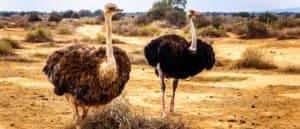In Native American culture, totem animals or spirit animals are spiritual symbols that protect and guide a person or their family or tribe. Some of these spirits would bring messages or direction for a particular time of life and then leave, while others would for a lifetime. The idea of a protective spirit animal resonates with many people today, even if they do not have a Native American heritage.
How Did Native Americans Discover Their Totem Animals?

Spending time alone in the woods on a vision quest was one way Native Americans discovered their personal animal spirit guides.
©Aleksey Boyko/Shutterstock.com
Native Americans did not just pick out their favorite animal and consider it to be their totem. Tribal and familial totems were handed to them at birth. Discovering the identity of one’s personal spirit animal might happen on a vision quest when a young person transitioning to adulthood would spend time alone in the wilderness. They might encounter a living animal or have a vision of an animal that they interpreted as being chosen by that spirit. Throughout life, this animal might appear to the person or occur in dreams to provide wisdom and reassurance.
Types of Totem Animals

The
grizzly bear
is one of many different popular Native American totem animals.
©Michal_K/Shutterstock.com
Totem animals of Native Americans differed according to where they lived and what species lived in the local habitats. Here are some of the more common Native American totems and meanings and the positive characteristics attributed to them:
- Bear — strength, leadership, motherhood
- Raccoon — curiosity, dexterity, exploration
- Turtle — fertility, a long life, protection
- Butterfly — transformation, adaptable to change
- Crow — cleverness, creativity, spiritual power
Totem Poles

In the Pacific Northwest, totem poles represent the spirit animals watching over the people of the tribe.
©Andrea Izzotti/Shutterstock.com
Native American cultures in the Pacific Northwest carved totem poles that represented the various totems protecting that tribe. Often at the top of the pole a thunderbird held a place of honor. This mythological creature could create thunder by flapping its wings and lightning by flashing its eyes. It used these powers to defeat creatures of the underworld.
Can You Have a Totem Animal?

It can be charming for children to role-play as members of another culture. In adults, taking parts of other cultures as one’s own may be frowned upon as insensitive.
©AlohaHawaii/Shutterstock.com
In recent years our society has become more sensitive to the fact that adopting parts of other people’s cultures is not always a compliment. “Cultural appropriation” may be offensive to some people because it feels like no part of their culture is sacred, but everything is up for grabs for people who “put on” aspects of other cultures like costumes, discarding them when they lose interest. It’s also a concern that some people use these types of ideas to market products, profiting from a culture that is not their own.
Nevertheless, no one holds a monopoly on the concept of animal spirit guides—an idea that is found in many cultures around the world. Anyone who wants to can learn more about these ideas and implement them to some degree. For some it might be a serious belief system. For others it could be a cultural mental construct that they find helpful in creating the kind of life they want to live, moving toward goals that are meaningful to them.
How Can You Discover Your Totem Animal?

People who are authentic to Native American beliefs about totem animals understand the animal needs to select them, not vice-versa.
©Melinda Nagy/Shutterstock.com
Discovering a totem animal for yourself depends firstly on your belief system. Do you believe that animal spirits are real and that one may choose you and become your protector? In that case, you might pay attention in your life to dreams, real-life animal encounters, or particular animals that seem to come to your attention frequently. Things might be in conversation, advertising, or other aspects of culture. People who hold this belief system may interpret these occurrences not as mere coincidence but as an attempt by the spirit world to get your attention. They would then go on to try to communicate with their spirit animal. They would also watch for ways it might try to communicate to them. For example, to provide guidance, protection, or special resources for the challenges they are currently facing.
What If You Don’t Believe in Animal Spirit Guides?

Even people who do not hold to Native American religious beliefs can appreciate qualities in animals that are worth emulating, like strength, loyalty, and courage.
©Maples Images/Shutterstock.com
If this is not your belief system, then, quite unlike the Native American approach of being chosen by an animal, you might wish to choose an animal for yourself. This would actually be more like a team “mascot” than a totem animal in the true sense of the meaning. You might simply think about which animals appeal to you. Ask yourself what it is that intrigues you about them. Do they have particular qualities you would like to have or that correspond to qualities you already have? This would not, of course, be true to the Native American concept. And of course, you wouldn’t present it to others as such. It would simply be your own personal response to the inspiration you have received from the worldview of a culture you admire.
Thank you for reading! Have some feedback for us? Contact the AZ Animals editorial team.








